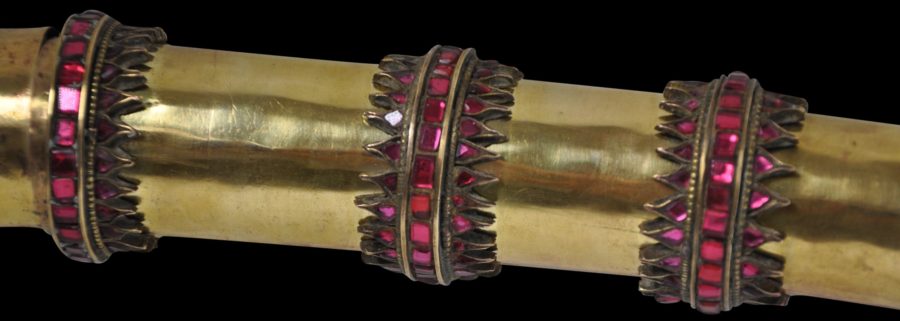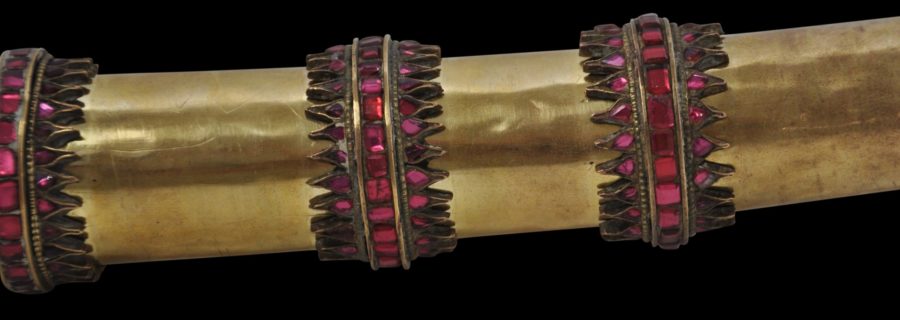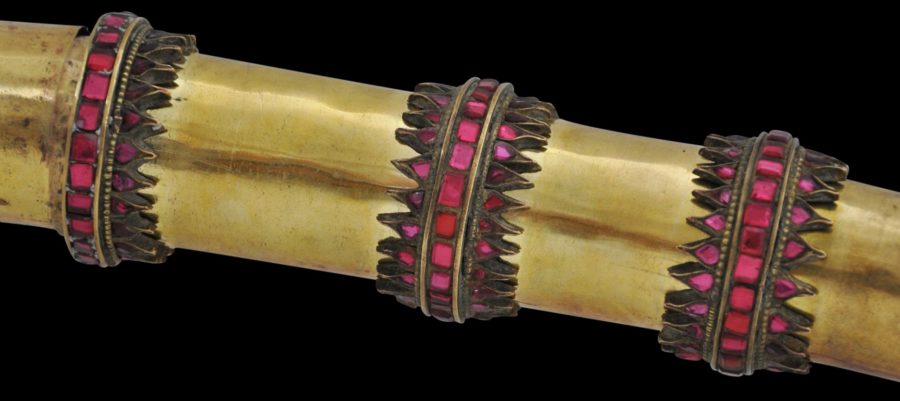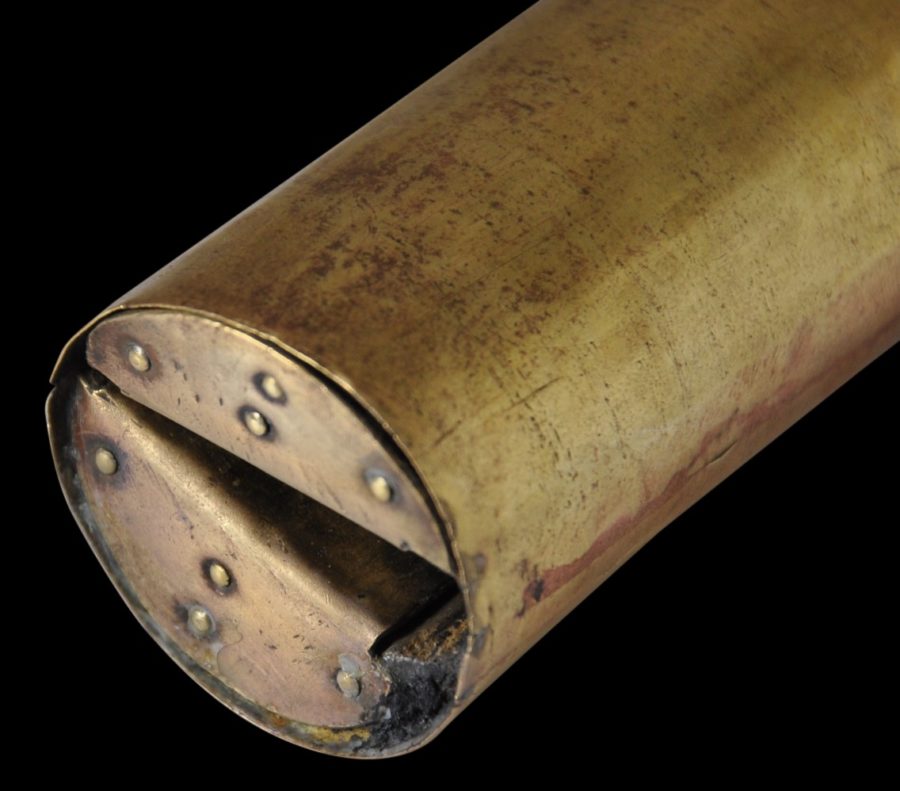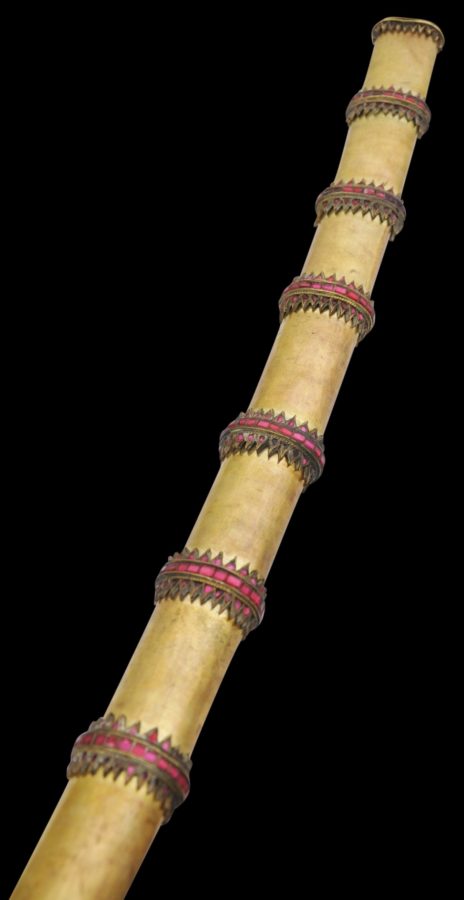Enquiry about object: 3125
Rare, Shan-Burmese Princely Regalia Gilded Dha Sword
Shan States, Burma 19th century
total length: 89.5cm, length of blade: 48cm, weight: 1,242g
Provenance
UK private collection; previously acquired from a dealer in France; said to have been acquired from a colonial French family in Algeria.
This special and rare long sword dha almost certainly was part of the regalia for a Shan ruler and possibly was held by the ruler’s bodyguard during state occasions. It is similar to those that can be seen being held aloft by bodyguards in a well-known photograph of seven Shan rulers – the Saohpa of Muong Pawn, Keng Tung, Muong Nai, Hsenwi, and Yawnghwe, and the Myosa of Kantarawadi and Hsamuonkham – at the Delhi Durbar of 1903 – see below, and also reproduced in Conway (2006, p. 66.) (The Shan States functioned for hundreds and perhaps for more than a thousand years as feudal city-states ruled over by local hereditary chiefs called saohpas or sawbwas. They were regarded as the absolute rulers of their region, in the same way that the Burmese monarchs had total control over their subjects. Each ruler had a court and accompanying regalia.)
The dha is completely encased in gilded metal. The scabbard and handle are decorated with thirteen rings of ruby-coloured stones and foil-backed glass in box and pave settings.
The blade is of high-quality steel. It ends not in a tip but with a concave end, as dhas sometimes do. Such blades also are sometimes encountered in Thailand where such concave tips on long, dha-like swords are known as hua tat (tad) khong tips. (In Burma, concave tips generally are seen on dha from Upper Burma, particularly from the Kachin and Shan states.)
The exterior is decorative and refined. But the blade shows that this is a serious weapon designed to be used – thus making it ideal for a bodyguard at court and state occasions: it is both decorative and protective.
The styling of this dha is in keeping with the Burmese gold and ruby-studded regalia kept in the Burma’s National Museum. (Burma is the world’s biggest source of rubies. The main area for ruby mining is around the northern town of Mogok.) The regalia, as well as many other items of gold and rubies, was looted by British forces from King Thibaw’s palace in Mandalay in 1885. A list of treasure handed over to the British includes mention of seven swords with handles and sheafs set with rubies and diamonds. Much of the treasure was probably melted down but many pieces almost certainly have ended up in private collections around the world, but often with their royal provenance obscured. Key pieces of the regalia were returned by the British to Burma in 1964 and 1965.
The dha here has minor dents here and there consistent with age and use. All the requisite stone or glass inserts are present; but some are later replacements. There is restoration to the hilt/pommel.
The image below is of the princely Shan rulers, mentioned above, dating to 1903. The guard on the far left holds aloft a dha not unlike the example here.
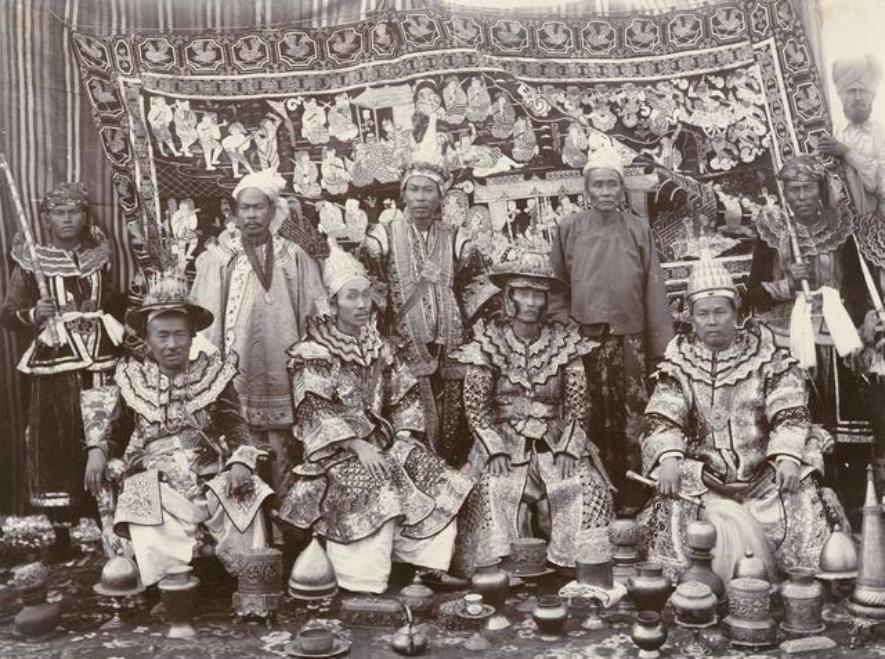
References
Conway, S., The Shan: Culture, Arts & Crafts, River Books, 2006.
Fraser-Lu, S., Burmese Crafts: Past and Present, Oxford University Press, 1994.
Themelis, T., Mogok: Valley of Rubies & Sapphires, A&T Publishing, 2000.







